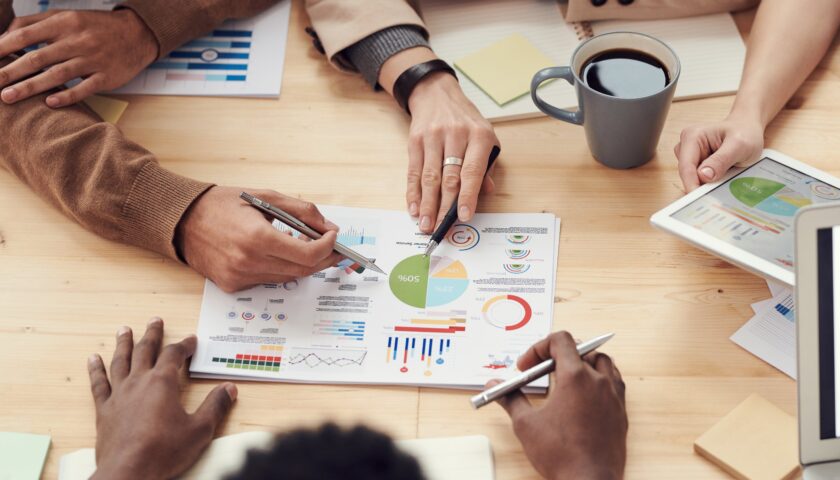Every business wants to make the most of every opportunity to lower taxable income or the amount of tax owed. The more hard-earned money you keep, the better. One of the ways you can reduce your taxable income is by maximizing instant asset write-offs.
What is an instant asset write-off?
The instant asset write-off is a scheme introduced by the Australian Government to help eligible businesses claim an instant tax deduction for the full cost of qualifying depreciating assets. The eligible assets include new and second-hand assets like vehicles, office furniture, and other business equipment. Before this tax-saving initiative was launched, these assets were subject to the general depreciation rules. Businesses used to enjoy deductions over the years, but with instant write-off, they can deduct the full cost in the year the assets are purchased and installed/used.
What does an instant asset write-off mean for your business?
The full tax deduction can lead to great tax savings and ultimately provides cash flow benefits to qualifying businesses. This is a simple and straightforward process that helps businesses enjoy the benefits immediately. However, if your business is doing well financially, you may also just choose to ditch instant asset write-off and get support when you really need it.
The program was introduced across Australia in COVID-19 to offer SBEs tax relief during the economically difficult period and give immediate benefits from the asset purchases. It was also a measure to stimulate spending and encourage businesses to invest. It’s one of the most talked about tax breaks, giving almost all businesses a chance to claim a valuable incentive.
How does an instant asset write-off work?
This temporary tax deduction scheme is available for all businesses with a yearly revenue of less than $5 billion. Millions of Australian businesses are eligible for this scheme. However, you need to be in business to qualify– having an ABN is not enough.
The purchased assets should be installed or ready for use within the time period specified. You can’t just store it in the warehouse and install it after a couple of years. The maximum threshold per asset is $150,000. As long as each item costs less than that amount, there are no limits on the number of assets you can write off. If the cost of an asset is more than $150,000, you may have to use the general depreciation rules.
What was the deadline?
This tax initiative started on 6 October 2020 and ended on 30 June 2023. The assets purchased and installed within this timeframe were able to qualify. If the items purchased were not installed or ready for use within the given time period, they can’t claim a full deduction in that financial year, but they can qualify for the next year if the program is extended in 2024. Those who did not make it to the deadline can still claim instant write-off but only for assets costing up to $1000. It will also be eligible for small businesses with a revenue of under $10 million.
Who is eligible for the instant asset write-off?
The instant asset write-off is a tax benefit available to certain businesses that allows them to immediately deduct the cost of eligible assets purchased for business use, rather than depreciating them over time.
Eligibility for the instant asset write-off typically depends on factors such as the business’s annual revenue, the type and value of the asset, and the timing of the purchase. Small to medium-sized businesses with an annual revenue below a certain threshold are often eligible for this tax benefit. Additionally, the asset must be used primarily for business purposes, and there may be restrictions on the types of assets that qualify.
It’s important for businesses to consult with tax professionals or relevant authorities to decide whether they are eligible and comply with any regulations.
What was excluded from the tax initiative?
The assets that can be written off are those with limited life expectancy and would depreciate over time. These include computers, office furniture, tools and equipment, motor vehicles, and so on. However, there are certain exclusions like:
- Assets that are being leased out or about to be leased out for more than 50% of the time on a depreciating asset lease
- Assets used for research and development
- Capital works like structural improvements or buildings
- Software assigned to a software development pool (not any other software)
- Horticultural crops including grapevines
- Intangible assets
- Expensive items like cars can be written off up to the given limit
Since there are certain rules and exclusions, you may not be able to deduct the full cost of your depreciating assets, but it’s best to work with a seasoned tax practitioner to maximize tax return and ensure compliance with the law. In general, the assets that qualify are only those that are used for business purposes. If the business assets are being used privately as well, the deductions will be prorated accordingly.
Can a written off asset be sold?
If you decide to later sell/dispose of an asset or change its use from business to personal, this will lead to balancing adjustments. The proceeds of the disposal will be included in the taxable income. It’s also a good business cadence to record the asset disposal’s gain or loss to properly update the balance sheet.
What assets exceeded the threshold?
Each asset has a threshold amount of $150,000. Each newly purchased asset that meets the criteria can qualify for instant asset write-off on your tax. You can make the most of instant asset write-off for multiple assets as long as they’re for full or partial business use. Again, if the asset is also used for personal purposes, the deduction will be prorated. To claim the full tax deduction, it has to be solely for business use.
How to claim the instant asset write-off
To claim the instant asset write-off, eligible businesses typically follow these steps:
- Determine eligibility: Businesses should first make sure they meet the eligibility criteria for the instant asset write-off, including annual revenue thresholds and asset type requirements.
- Purchase eligible assets: Buy eligible assets for use in the business. These assets must meet the criteria set by the government, such as being new or second-hand and used primarily for business purposes.
- Keep records: Maintain accurate records of the asset purchase, including invoices, receipts, and other relevant documentation.
- Calculate deduction: Calculate the deduction amount for each eligible asset. The deduction is generally equal to the cost of the asset, up to the instant asset write-off threshold set by the government.
- Include deduction in tax return: Report the deduction in the business’s tax return for the relevant income year. Businesses may need to use specific labels or forms provided by tax authorities to claim the instant asset write-off.
- Report tax return: Report the tax return including the instant asset write-off claim by the relevant deadline, ensuring compliance with tax regulations and requirements.
- Seek professional advice: For complex tax situations or if you’re not sure about eligibility or claiming procedures, businesses should seek advice from qualified tax professionals or consult with relevant tax authorities.
By following these steps and meeting the necessary requirements, eligible businesses can claim the instant asset write-off and potentially reduce their taxable income, providing valuable tax savings.
What alternative finance options are there to pay off assets?
If you weren’t able to make it to the deadline and need other finance options, you can still benefit from your newly purchased assets or any valuable asset for that matter by resorting to funding options like asset finance. If you have a lot of accounts receivables, you can also access funding via invoice discounting or factoring.
You don’t have to rely on instant asset write-offs to free up funding. As a rule of thumb, all business decisions should never be based on tax considerations alone. Purchase assets or equipment if your business genuinely needs it. Consider your personal and business circumstances before making significant purchases. The asset should drive ROI and all business initiatives should depend on your existing needs and strategic business plan.
If you have cash flow gaps, there are other alternatives available. You don’t have to rely on bank loans either. You can get easy access to funding with business finance services like Swoop.
If purchasing the asset makes sense and drives business growth yet you don’t have the money to make the purchase, you can still resort to Swoop to support your business plans and make the necessary investments without hurting your cash flow.
Secure finance through Swoop
We offer tailored and flexible finance services to grow your business or improve your cash flow. We successfully supported over 100,000 customers and counting. All you have to do is create a free account, get matched for funding opportunities, start the easy application, and receive funding without any hassle.
Join Swoop today! It’s all fast and easy. Sign up to get started!








 yet? Register here!
yet? Register here!